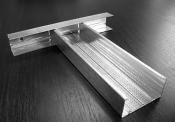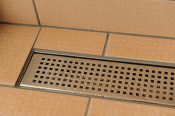Search
Login
Recommended
The advantages of drip irrigation and its components
Drop watering is a method where small doses of irrigation water are supplied directly under the roots of plants using dropper dispensers and are used most efficiently. At the moment, drip irrigation is the most perfect and effective means of irrigation. In many places, it became possible to engage in gardening precisely thanks to the invention of this method - even in places where they had not even dreamed about it before due to the lack of regular watering.
Content
- The advantages of drip irrigation video
- History of the invention of drip irrigation
- Drip irrigation system and its components video
The advantages of drip irrigation

The advantages of drip irrigation are many, they are obvious and confirmed by the long-standing practice of gardeners in most countries of the world, these are:
- earlier and plentiful harvest;
- preventing weeds;
- prevention of soil erosion;
- preventing the spread of disease;
- saving of irrigation water (about half) due to the fact that its evaporation and infiltration are excluded;
- reduced use of fertilizers;
- the inability to get irrigation water on plants, which completely eliminates sunburn;
- Prevention of crust formation on the surface of the soil, which gives better ventilation to the roots;
- the possibility of continuous and uniform watering without your presence and participation, all 24 hours a day, in any wind;
- actions for processing plants and harvesting can be carried out at any convenient time, without focusing on watering;
- simplicity and accessibility of installation and maintenance;
- there is no need to shift the hose, risking crippling or breaking plants, spreading dirt along the paths (once laid and forgot);
- efficient use of labor;
- a significant increase in the intervals between loosening and weeding;
- the shelf life of cultivated plants increases;
- reduced wear on pipelines;
- Significant cash savings.
History of the invention of drip irrigation
The very first state that began the pilot application of the drip irrigation system, back in the middle of the last century, was Israel, in which this effective method has been successfully used to this day. As you know, the local climate is quite arid, from May to September, rainfall is extremely rare, so it is not surprising that there was a need for the invention of an effective irrigation system in conditions of high temperatures and lack of irrigation water. To our time, as you know, thanks to the invention of this smart irrigation system, the Israeli state has become one of the leading exporters of crop products.

Drop watering today has gained its well-deserved popularity and is successfully used for growing both vegetables and fruits, berries and grapes in open ground and in greenhouses.
Next, we consider the drip irrigation (irrigation) system.
Drip irrigation system and its components

Drip lines - This is either a tube or tape. Drip lines are laid out along the rows of planted plants. They are made both for long-term use (5-6 years), and one-season (the so-called disposable).
Drip tubes, usually seamless, made of polyethylene, in them at a certain distance both outside and inside (depending on version) drippers for irrigation are installed, which have channels of small cross section in a zigzag shape in order to restrain the pressure of irrigation water.
Drip tapes, made of strips of polyethylene wrapped in a tube and welded by thermal welding. At the same time, small filter holes are specially left inside the seam, from which water for irrigation falls on the beds. The drip tape is laid directly on top of the irrigation beds with the droppers up, directly, excluding turns and bends, along the planted rows, close to the roots. There is a cap at the end of the drip tape. This is the most acceptable and cheapest option (than pipes) for large irrigated areas.
Trunk pipeline this is the main hose connected either directly to the water supply or to the irrigation tank immediately after the tap, which is installed at an elevation of about a meter, it is laid along the irrigation beds, and a distribution pipe is attached to it. During installation, the hose is fixed to the ground to prevent movement with conventional wire clips.
Distribution pipe this is a pipe, drip tubes or tapes are connected to it. With a tank with irrigation water it connects the main pipeline.
Irrigation water filtration unit - filters that clean the irrigation water from various unnecessary impurities (from fine debris, sand, rust and algae) are connected to the tank with irrigation water. It is best to use a fine filter.
Water intake unit for irrigation - a crane mounted either before or after the filter, which allows you to precisely control both the duration of the irrigation time and the amount of irrigation water used.
Fertigation Node (for the use of both fertilizers and seed dressers) is a device that is connected to the main hose. With the help of it, a special fertilizer concentrate is evenly injected into irrigation water, which ensures the full assimilation by plants of water-soluble top dressings and microelements that come dosed and accurately to plants.

Drop watering is a maximum of efficiency with a minimum of effort!





